Mahler by the world's greatest conductors
Wednesday, April 28, 2010
To mark the double-year anniversaries of Gustav Mahler (1860-1911), Michael McManus visited 11 of the world's leading conductors to talk Mahler. Each conductor focused on one of the symphonies, including the song-symphony, Das Lied von der Erde. We also offer a Gramophone recommendation for each symphony.
SIR CHARLES MACKERRAS on Symphony No 1
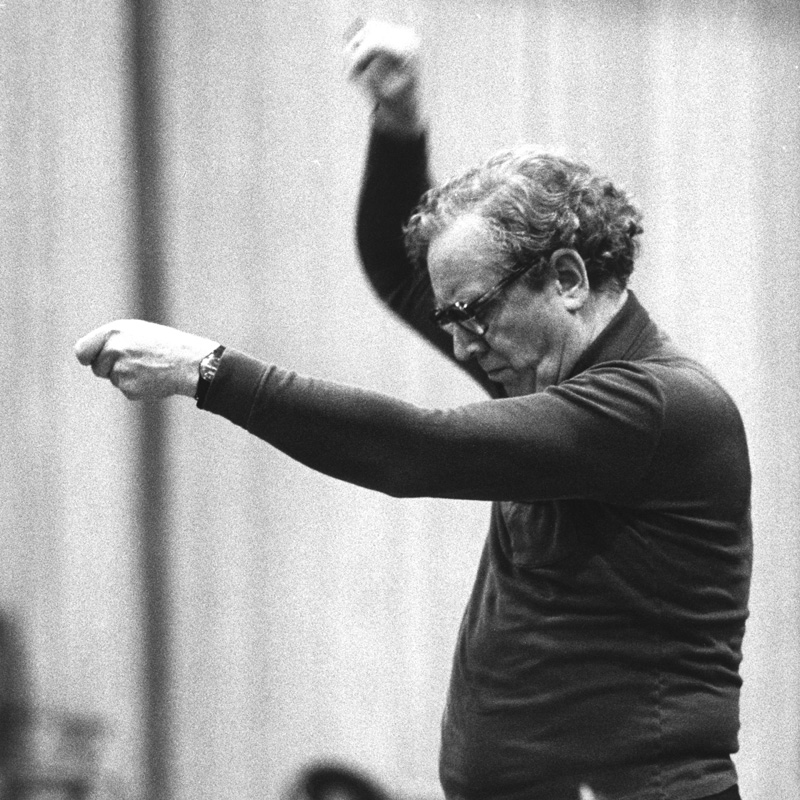
This symphony was the one to which Mahler attached the greatest importance – he conducted more performances himself of this than he did of any of his other, later works. Originally it had five movements but the original second movement, “Blumine”, was soon cut out because it didn’t really match thematically with the rest of the work. The other four movements are united by a descending fourth motif – it runs right through all of them.
The opening of the piece is a huge nature description, with that long, long octave played by the strings, then the first appearance of the descending fourth motif in the woodwind. The sounds of nature – cuckoos – and the quick fanfares from the offstage hunting horns are completely unrelated to the general tempo. When the movement hits a faster tempo we have the first reference to one of the Wayfarer songs – “Ging heut’ Morgen übers Feld” – which provides the main theme of the allegro part of the movement. Two more songs from that cycle of four are quoted subsequently, one in the Trio of the Scherzo and one in the middle of the extraordinary third movement. The third movement has a lot of cheeky, almost evil, music in it. The harmonies are grotesque and the orchestration is very harsh. I believe Mahler had in his mind the funeral cortège of a hunter, with animals walking behind the coffin, rejoicing in the fact he has died. Very unusually, the movement begins with a solo double bass, playing a theme we know as “Frère Jacques”. This turns into a “round”, as the instruments come in one after another. On top of that there is a peculiar parody on the oboe, then on the E flat clarinet. Again, the tone is harsh, almost ugly. It’s an extremely strange movement which was violently attacked by the critics at the time, especially in Vienna, for they believed such things were not appropriate in a symphony. They could be very conservative and believed a symphony must be a very classical piece of music, within which any description of nature or actions was unsuitable. César Franck was even denounced for using a cor anglais in his symphony.
For the last movement an even bigger orchestra is required. It takes us from Inferno to Paradise, starting off in an infernal way, using that motif, up or down a fourth. Sometimes the motif is used as a menacing call but later on it is used as a soft, gentle, noble theme, going into a chorale theme, which Mahler uses very cleverly. The first time it comes, it is stated very softly in the brass, which sometimes are muted. Mahler was always changing the orchestration in his pieces, and there are versions of this piece that have the horns muted in this passage and also others where they are open horns, playing very quietly. It is a most remarkable sound. The call starts off in C major then suddenly shifts up a tone to D major, the main key of the symphony. It is one of the great moments of the symphony. At the very end the chorale theme comes back and Mahler writes that the horn-players should all stand up and make the greatest possible noise. This effect is used more often in jazz bands these days. I once conducted the piece at the Aspen Festival in Colorado, where a horn colloquy was also going on. In the final rehearsal and the performance we had about 30 horns playing this in unison.
The music gets faster and faster, leading to a tremendous climax, as we go through F minor to D flat major, via C major to D major. On our recording, to double the horns, we had our eight horn players re-record the passage, so they could double themselves up.
I very much like Bruno Walter’s recording of the piece. He knew Mahler and understood what his music really meant. He brings out all the beauties and subtleties of Mahler’s music. There is also a very interesting interview with him on the CD, in which he talks about how Mahler behaved with orchestras. He seemed always to be changing his mind about how things should go and kept on altering the orchestration in order to make the music clearer. Mahler wrote huge works but he also had a kind of mania about clarity. Everything had to be audible. He wanted the listener to hear every instrument and relish every detail.
Sir Charles Mackerras’s CfP recording of Mahler’s Symphony No 1 with the Royal Liverpool Philharmonic Orchestra is available as a download from iTunes
THE CLASSIC ACCOUNTS OF SYMPHONY NO 1
BRSO / Rafael Kubelík (DG 449 735-2GOR)
Read review in the Gramophone Archive
Bamberg SO / Jonathan Nott (Tudor TUDOR7147)
Read review in the Gramophone Archive
(Mackerras photo: Reg Wilson/EMI Archives)
MARISS JANSONS on Symphony No 2, “Resurrection”
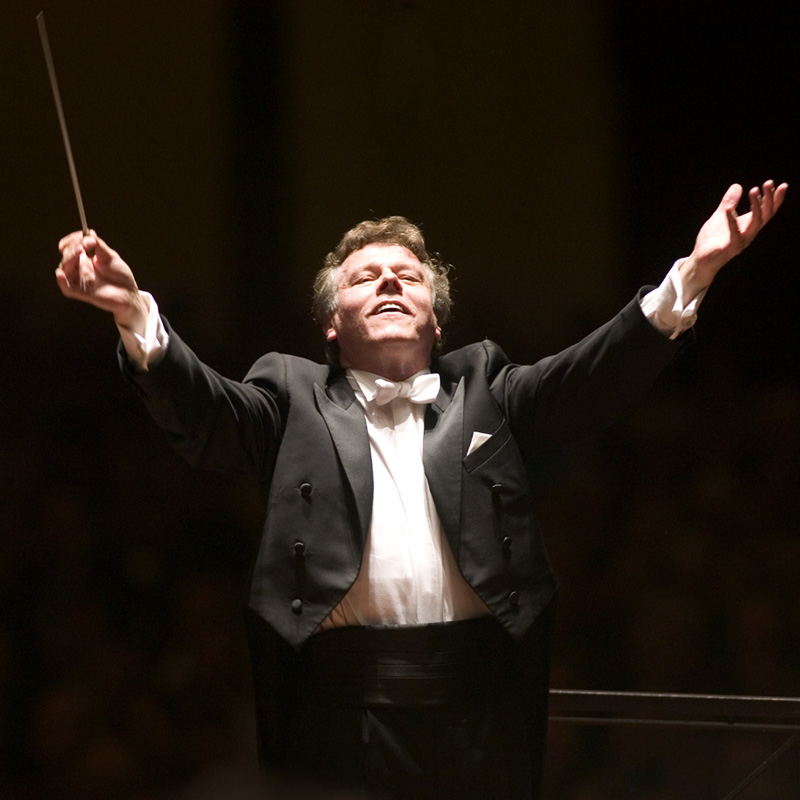
Mahler is one of the most significant composers in the world, in all of history. The questions he sets out in his works are enormous. Why is his music so popular? It’s because in his music there is everything. It’s universal. You find nature, sarcasm, love, hatred, the grotesque, tragedy and comedy. Like finding his own face in a mirror, every listener can find something to relate to, a bridge into the content of the music. There is something for everyone – and people find echoes of their own fears, doubts and suffering.
The Second Symphony is typical of how he puts for himself and for listeners the big questions. What is life? Why are we living? What will be next? Is there an afterlife? The piece questions a lot, then he describes the mood of the human soul and in the last movement he answers the questions he raises in the first movement. His answer is the Auferstehung – the resurrection – because he believes we live many, many lives. That first movement is a funeral march for the hero of the First Symphony and that heroic element is very typical of Mahler, in almost all his symphonies. Who is the hero? Man, Mahler himself. In this respect Shostakovich is very close to him, for Shostakovich is another composer who represents himself as the hero in his own music. Mahler never observes from a distance. He is “inside” every situation. He wrote at the time that he imagined himself in his own coffin. Then we go through the moments of life. The second movement recalls nice, beautiful moments. These are nice memories. The third movement raises more philosophical questions. It’s based on Mahler’s own song about St Anthony of Padua preaching to the fishes, which of course is really addressed to human beings. The movement is full of phantoms and darkness. The fishes listen, then they forget. They don’t learn. This is Mahler’s view of human beings. The conclusion is that you can tell people what you want. You can preach, you can tell people how to live, what not to do, but the reaction is nothing. Satire, sarcasm and irony are there in the form he used, and Mahler believed only a few people would understand his message.
The conclusion is very modern. In the 21st century our technical development is so advanced and our scientists have achieved so much, so our spiritual development too should be at such a very high level, but the development of the heart and soul is far behind. People can fly to the moon but spiritually they are at a low level, because we don’t learn from our mistakes and we don’t take care of our spiritual development. It’s interesting that he should put such a light melody – almost a street melody – into such a serious and philosophical symphony, but that is typical of his use of the grotesque. In the fourth movement, “Urlicht”, we are dealing with very deep music from the soul, and the love of God. This should be sung in a childlike voice, to capture the innocence and pure soul of a child. This was Mahler’s credo – true honesty can be found in how a child reacts. The fifth movement is an incredible fantasy. There is a frightful, terrifying march of the dead, then comes the big call – God and judgement. This is – or should be – the softest entrance by a choir in all musical literature. The chorus speaks with God and prays, with a special optimism. Here is the answer. Everybody is waiting for God’s judgement, then it doesn’t happen. In that movement, everyone is equal. There is no judgement in the end for him. Everything is calm. This is very special – you are in another world already, and you start a new, different life, like a child. Such music could only be written by a genius and only Mozart could compose this quickly.
The latest edition from Universal corrects another 500 or so mistakes. There are instances where it is possible Mahler himself made a mistake, which every human being can do. There is no clear evidence either way and only Mahler could have given a definitive answer. Even in Beethoven there are mistakes and my old teacher used to say “we don’t correct this, because we are happy to repeat the mistake of a genius”. It’s really important to establish what Mahler really wanted, but he was polishing this symphony right up until the last performance he gave of it, in Paris in 1910. We can take account of the changes he made but with Mahler there are no ultimate answers.
Mariss Jansons’s recording of Mahler’s Symphony No 2 with the Oslo Philharmonic Orchestra is available on Chandos (CHAN6595) and a new live recording, with the Royal Concertgebouw Orchestra, is due later this year
THE CLASSIC ACCOUNTS OF SYMPHONY NO 2
Philharmonia Orchestra / Otto Klemperer (EMI 567235-2)
Read review in the Gramophone Archive Download from Passionato
City of Birmingham Symphony Orchestra / Simon Rattle (EMI 345794-2)
Read review in the Gramophone Archive Download from Passionato
(Jansons photo: Marco Borggreve)
LORIN MAAZEL on Symphony No 3
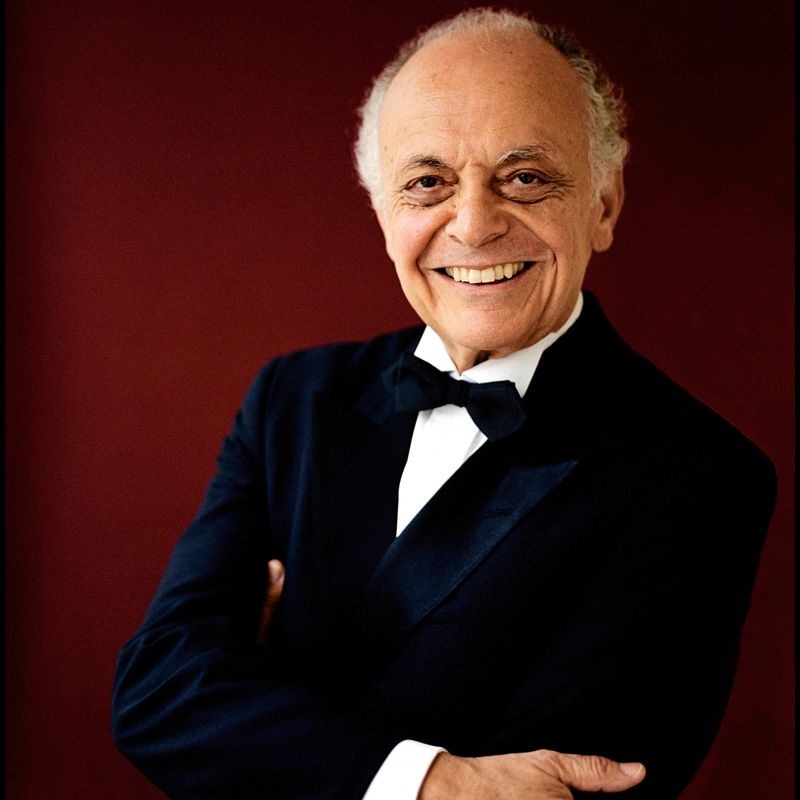
I don’t believe in verbalising music. Music is a language of its own, which exists because you can express in it what cannot be expressed in words. Look how Berlioz failed – and he was a marvellous stylist, a master of the French language. Great writers such as Thomas Mann, Aldous Huxley and George Bernard Shaw have all tried. They wrote fantastic prose; but for a musician, what music is about cannot be adequately described in words. At the end of a performance, anything that is said can shatter that very, very delicate, vulnerable shell that has been created during the performance.
Mahler suffers greatly from being subjected to sentimental mediocrities, with heart-on-sleeve performances that stretch, pull and exaggerate the music. The inner balance of the music is forever being challenged, much to its detriment. So many interpreters see in Mahler a self-pitying person, grappling with the monsters of destiny and so forth. This is nonsense. He wrote music the way he heard it, because he had to write it. He tried to find the right notes for images of a musical nature.
If you eliminate the sentimental, which I don’t think has any place in his music, there are certainly elements that one can characterise. There is the martial, the funereal, the bucolic, the insouciant, the light-hearted and the hopeful.
He was a hopeful person, and the end of this symphony, in D major, is in a sense trying to say, “I, Gustav, like everybody else, have looked into the abyss and what I see there is frightening, but now I must reaffirm my belief in life”. It is very much like Beethoven, who was a great reaffirmer. He looks to that moment in his symphonies where he can say, “yes, what I have depicted – voids, abysses, chasms – does exist, but I believe, somehow, in some dimension, it’s going to work out for the better”.
The reversal comes in the last movement of the Ninth Symphony. He knew he was dying. He has used up all his positive energy and it is aggressive. He is angry, shaking his fist at destiny, before finally accepting his fate. In the first movement of the Third Symphony there are three elements – martial, bucolic and insouciant. His tongue-in-cheek writing is so undervalued. He had a marvellous sense of humour, there’s no doubt about it, poking fun, very often at himself. The second movement floats along, with little filigree semiquavers and sweet, innocent, semi-naive tunes, but these tunes are not really simplistic. They are deliberately stated as directly as possible in order to create a contrast with moments when he gets angry about things or feels he has to make a statement.
Probably the most delightful music in the symphony comes in the third movement. It is full of lightness and sweetness. The posthorn solo is so typical of Mahler’s love of calls. The calls he heard as a child in what used to be Czechoslovakia played an important role in his musical development. He created an aesthetic around the call that is his own. The fourth movement is a world unto itself. The fifth movement – “Bimm Bamm” – again contains music you might call simplistic. It isn’t. He had the courage of great composers, to place very direct, uncomplicated music within a larger, more sophisticated frame. Both he and Beethoven had that extraordinary courage. One should be not be writing to please one’s colleagues but in response to an inner imperative. The text here is incredibly innocent and yet also highly sophisticated, because it lays the groundwork for the last movement, with its interruptions of faraway sounds, heard through the ether, as though from another world. In the end all of that is banished, the great tune comes back and we feel good about life. It reaffirms the meaning of life and the significance of our having lived.
As with Beethoven, each movement can stand on its own. That they are strung together to form a symphony is almost accidental. Mahler was a doubter – as all great thinkers are – and wrestled with the problems of eternity and the afterlife. These problems cannot be resolved to anyone’s total satisfaction. There is a lot of fist-shaking at destiny on the part of the Beethovens and Mahlers, as if to say, “it may be that you will have the final word, but I am still alive and kicking and have a few things to say”.
Lorin Maazel’s recording of Mahler’s Symphony No 3 with the Vienna Philharmonic Orchestra is available on Sony as part of a 14-CD box-set (SX14X87874) and a live New York Philharmonic performance is available as a download from iTunes, eMusic and other sites
THE CLASSIC ACCOUNT ON SYMPHONY NO 3
New York Philharmonic Orchestra / Leonard Bernstein (Sony SM2K61831)
Read review in the Gramophone Archive
(Maazel photo: Andrew Garns/New York Philharmonic)
DAVID ZINMAN on Symphony No 4
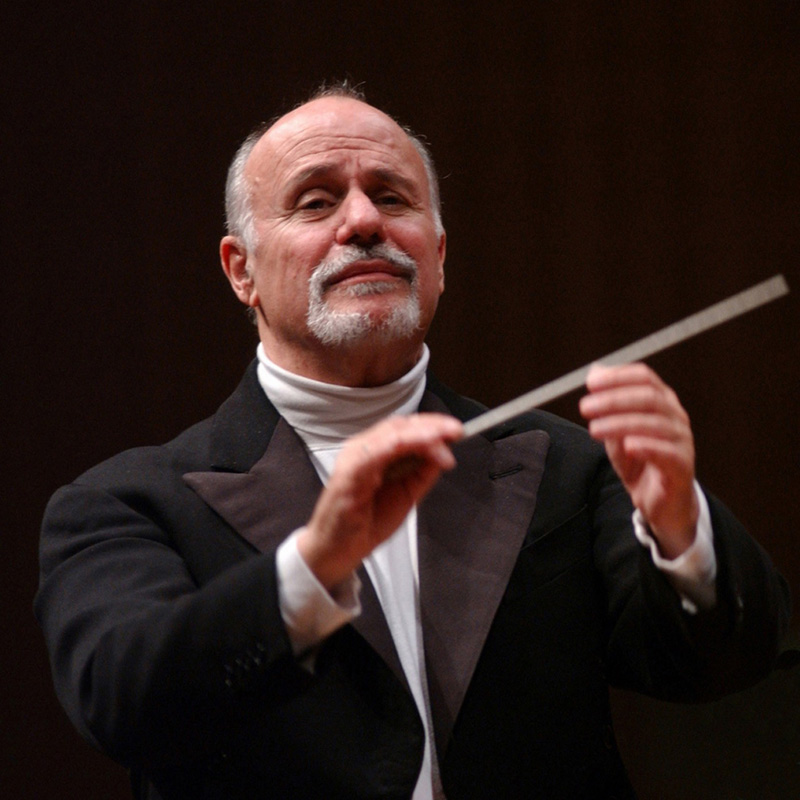
Mahler came to regard the Fourth Symphony as the closing work in a quartet of works, although there are still seeds of it left in the Fifth Symphony. The music in the Fourth is all derived from the wonderful song in the last movement. He had been thinking about that song – “The Heavenly Life” – for a long time and within that song he had found the seeds for many ideas he had already used in the Third Symphony. Something about that song really spoke to him and obsessed him. In fact he originally included the song itself in the Third Symphony, but then he replaced it with the Bell Song – “What the Child Tells Me” – immediately before the closing Adagio. This song had been hanging around for a long time and it spawned both the Third and the Fourth symphonies.
Consequently, the Fourth is very unusual, in that it was composed backwards, with the last movement composed first and everything else in the piece then relating thematically to this heavenly finale. Maybe the first three movements therefore describe a heavenly life on Earth. The first movement could describe a man with much cheerfulness and delight in his life – all touchingly human. Then comes the second movement, with Death striking up a dance. This is a very childish view of Death and the fears that we have, with Death fiddling very wildly on an out-of-tune violin. Then the third movement – the most wonderful movement of the piece – is like a very beautiful painting of St Ursula, who appears by name in the finale. So the entire piece is very much a continuation of the Third Symphony, with all those programmatic titles for movements – “What the Flowers Tell Me”, “What God Tells Me”, “What Nature Tells Me” and so forth.
What makes the piece so wonderful is its classical form – only four movements, played by a very small orchestra, without trombones and tuba. It is in a way an odd one out, providing contrast but also continuation. These little motifs that appear in the Third and the Fourth symphonies are very beautifully developed. For me, it is the one truly perfect symphony he ever wrote, and also the most misunderstood, because he tried to go back to a world of purity and naivety, where music is just music and music speaks directly, just as a child speaks. I think that there’s a lot written about his ideas about the importance of naivety in life.
This is the most folk-like of his works and I think it’s my favourite of them all. The first recording I got to know was the amazing Szell recording – I also like his Sixth Symphony very much – but I think my first recollection of hearing Mahler was hearing Mitropoulos rehearsing in New York. Even though the last movement of the Ninth is something I shall always cherish and adore, the Fourth is something even greater for me. The appearance of Heaven at the end is so wonderful, and he makes such a noise with such small means.
What is very fascinating in this symphony is the manner in which he uses Klangfarben: for the first time the voices come out of one another, and various distances of voice and sound are written into the piece. There is such sophistication, and he was at his most sophisticated as a conductor at that time. It’s a study for a composer, to see how Mahler balances everything and ensures that all the detail comes out. He was beset with problems at his opera house at the time, but then he happened to meet Alma who, let’s say, changed him for a time.
There are many attempts at this symphony, and the hardest aspect is finding the ideal voice from the singer in the last movement. That’s very hard, because some who have a wonderful top have a feeble low register and some who have a feeble top have a wonderful low register. The Bernstein recording tries a boy soprano and that doesn’t work either. It’s one of those things where you want to get to the core of it and find the perfect solution and you never quite do. This symphony is a very special work and I will carry on attempting to get to its heart for as long as I live. There is something about that slow movement which is just universal, timeless and beautiful. It’s perfect – the one truly still centre that Mahler found.
David Zinman’s recording of Mahler’s Symphony No 4 with the Zürich Tonhalle Orchestra is available on RCA Red Seal 88697 16852-2
THE CLASSIC ACCOUNTS OF SYMPHONY NO 4
Juliane Banse; Staatskapelle Dresden / Giuseppe Sinopoli (Profil PH07047)
Read review in the Gramophone Archive
Judith Raskin; Cleveland Orchestra / George Szell (Sony SBK46435)
Read review in the Gramophone Archive
(Zinman photo: BMG)
SIR SIMON RATTLE on Symphony No 5
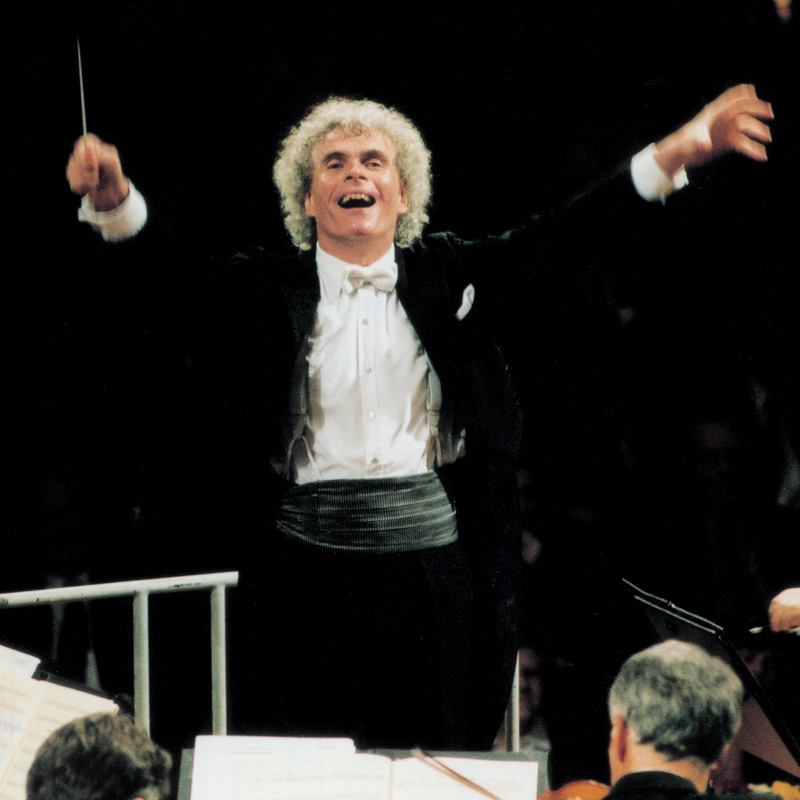
The Fifth was almost the last Mahler symphony I came to grips with. I always found it peculiarly difficult. I first heard it when my father went to America in the early 1960s and came back with a copy of Bruno Walter’s really astonishing recording with the New York Philharmonic. It’s the fastest performance you could ever hear and I wasn’t to realise then that Walter had very much his own performing ideas. My first impression when I subsequently heard it live was that it didn’t sound like the same piece at all. At first, as a teenager and a young man, I couldn’t understand why the piece as a whole seemed to keep failing, but that is exactly the point. This is a piece desperately longing for a conclusion and one attempt after another fails. You must hear it through to the end; it was a totally new type of symphony.
Before my inaugural concert in Berlin I had conducted the symphony quite a lot, but it seemed the ideal piece for that special occasion, in combination with Tom Adès’s Asyla. The two pieces possess similar wildness. The music itself seems to be trying to find a way out of a predicament, and that was something entirely new in the symphonic form. Rather as in Tristan und Isolde, the final reaching of the goal is put off and put off. It’s really in three movements, not five. The opening two movements start with a funeral march, which is interrupted by eruptions of rage and anger. These two movements together represent an attempt to deal with the fact of death, and an attempt to break away from darkness.
I am very grateful to have been able to hear Mahler’s piano roll recording of the first movement. You can hear him swinging every rhythm in the Viennese style, which is so different from the German tradition. Of all Mahler’s symphonies, this is the one most rooted in Viennese rhythms. This makes it much tougher to play. You don’t play what you see in the score. You have to play what it means.
The middle movement is really one huge development section. The first horn part in this movement is written as a separate part, for a solo, obbligato horn, so I do believe the player should be placed separately from the horn section. Otherwise the orchestra ends up waiting for the horn. This seems to be something Mahler did and it turns it into a different piece, accentuating the dialogues between the horn and the strings. There is a dangerous, dark side to this movement too, despite all the exuberance, as the Viennese waltz finally loses its innocence.
By the time I was a teenager, performances of the Adagietto were down to half-tempo. This must be the only time in musical history that a film, Death in Venice, has affected how people perform a piece of classical music. Let’s hope there will soon be a generation that can put Dirk Bogarde out of its mind.
Leonard Bernstein was a great, great Mahler conductor but I do believe he misread Mahler’s intentions in this movement. It’s Mahler’s declaration of love for his wife Alma, sung with words that cannot be written. It is also the basis of the finale, so these two movements also are really one long movement. The themes come back, in different forms and shapes. The finale has its shadows but it’s really the last symphonic movement Mahler wrote where there is complete joy – unalloyed exaltation.
Mahler tried to repeat this in the Seventh Symphony but by then he was a very different person. It’s a great tribute to Haydn, the other great composer who could capture good humour in profound music. It was not so long since Brahms’s Fourth Symphony and many people were still amazed, almost insulted, by a symphony that ended tragically. The critic Hanslick likened that piece to being hit over the head for 45 minutes by two very intelligent men. That is what Mahler was up against.
Mahler was trying to find another style in this piece. He had recently devoted himself to the study of counterpoint and he found the scoring of this piece very hard. He revised it many times. I recently conducted Tristan in Vienna and the librarian loaned me Mahler’s copy of the score for the first week of rehearsals. There were so many detailed markings – he really was the most intensely practical musician – that it was like having Mahler in the room with me.
Sir Simon Rattle’s recording of Mahler’s Symphony No 5 with the Berlin Philharmonic Orchestra is available on EMI (557385-3)
THE CLASSIC ACCOUNTS OF SYMPHONY NO 5
New Philharmonia / Sir John Barbirolli (EMI 566910-2)
Read review in the Gramophone Archive Download from Passionato
Vienna Philharmonic Orchestra / Leonard Bernstein (DG 477 6334GGP)
Read review in the Gramophone Archive Download from Passionato
(Rattle photo: Peter Adamik/EMI Classics)
CHRISTOPH ESCHENBACH on Symphony No 6
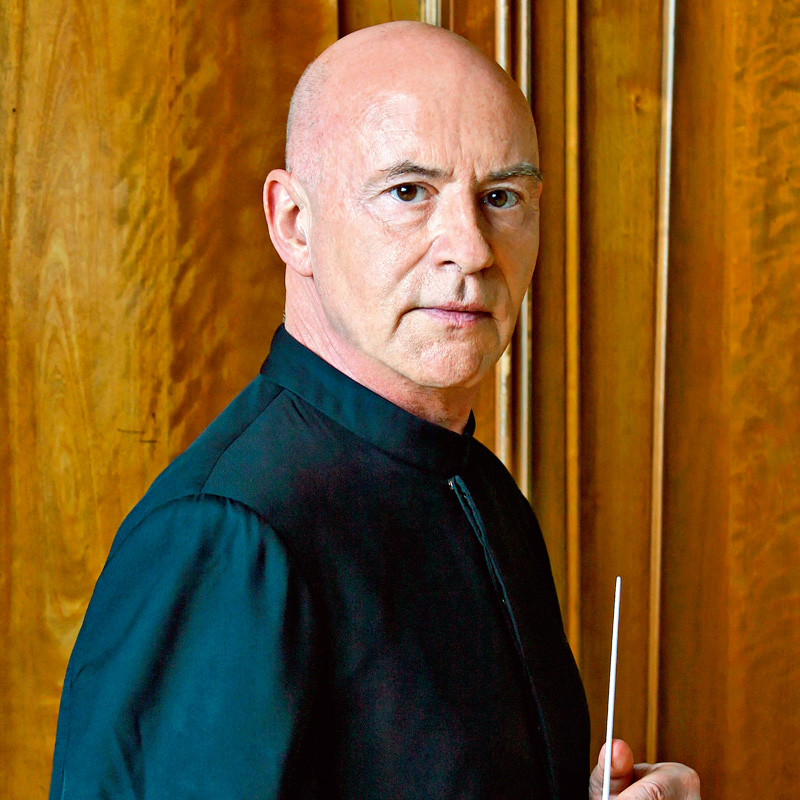 The Fifth and Seventh symphonies both contain glorious statements of joy, and Mahler evidently felt he needed to write something between those pieces that gave a view on the tragic, negative side of life. It is a perfect piece for live recording, because then you really have everyone on the edge of their seats. It is an amazing symphony, so full of power, and the first movement in particular blows you away, thanks to that march rhythm right at the outset. The struggle from that A minor opening to the conclusion of the movement in A major is really titanic, with moments of extraordinary contemplation on the way – marked grazioso. Very characteristic is Mahler’s use of the cowbells – they speak of loneliness, of mountains, of being with nature. The last shimmer of life comes not from man but from animals.
The Fifth and Seventh symphonies both contain glorious statements of joy, and Mahler evidently felt he needed to write something between those pieces that gave a view on the tragic, negative side of life. It is a perfect piece for live recording, because then you really have everyone on the edge of their seats. It is an amazing symphony, so full of power, and the first movement in particular blows you away, thanks to that march rhythm right at the outset. The struggle from that A minor opening to the conclusion of the movement in A major is really titanic, with moments of extraordinary contemplation on the way – marked grazioso. Very characteristic is Mahler’s use of the cowbells – they speak of loneliness, of mountains, of being with nature. The last shimmer of life comes not from man but from animals.
In my live performances and my recordings I have the Scherzo second, for two reasons. First of all I think it works in terms of the emotional logic of the piece. The demonic dance of the Scherzo carries on the sheer power of the opening movement. The march rhythm of the first movement is inverted – the emphasis is now on the upbeat and the switch to a 3/4 rhythm represents another attitude, a rebellion against the 4/4 of the preceding movement. The sforzatos on the third beat make this march a double opponent of the one that went before. There is a second reason too. To my mind, there is a crucial tonal clue in the fact the Andante ends in E flat major, which should be followed by the parallel, related key of C minor – the beginning of the finale.
We don’t know for sure why Mahler changed his mind about the order of these movements. Numerous authorities have written on the matter but there is no definitive answer. My belief is there may have been practical reasons. Orchestras at that time may well have struggled to play this music, and to have two such unrelentingly powerful movements together may have been too much for them technically. Mahler may also have been influenced by advice from someone else, as Bruckner so often was, though Bruckner was of course tormented by self-doubt, which was a problem Mahler never had. I just believe the original way is preferable. The Scherzo is such a rebellious and rough piece, with a Trio that comes twice and has the unusual marking altväterisch – like an elderly father. I imagine an old man, uttering opinions and dancing awkwardly. There is also that marking of grazioso – implying a certain sympathy with old age.
Mahler wrote only wonderful slow movements but this Andante is one of the most wonderful. There are such beautiful, cantabile moments, especially when the music slips into C major and everything seems to stand still. No one can breathe any more. Even the passionate climax with the cowbells is cantabile. Everything is wonderfully balanced and the finale emerges naturally from this, with its unusually long introduction before the main subject appears.
There are also discussions about the third hammer-blow. I fully accept Mahler’s decision to leave it out. If you look at the score carefully, the two other hammer-blows are each followed by an incredible struggle. You are hit by a hammer – by destiny – and it is a phenomenon from outside our realm of understanding. Twice we make every effort to struggle back against Fate. I believe Mahler excised the third hammer-blow because he didn’t want to make a final, pessimistic statement, which might have been interpreted as the death of symphonic creation in general. He already had it in mind to write a Seventh Symphony, which would be followed by the glorious Eighth, Das Lied von der Erde, the Ninth. So this was not the end.
Shostakovich wrote highly personal music too but he never captured all the facets of life in the same way. Many people wonder why Mahler wrote such tragic music when he was at the height of his powers. We can never understand the soul and thought-processes of such a genius but I believe this music demonstrates how full of force and energy he was. For him, this was the right time to write this music. Furthermore, he had reasons to sense a not-so-happy future ahead. He had already experienced some big fights at the Vienna State Opera and anti-semitism had begun to manifest itself. Out of all that burst this volcano of tragic force.
Christoph Eschenbach’s recording of Mahler’s Symphony No 6 with the Philadelphia Orchestra is available on Ondine (ODE1084-5D)
THE CLASSIC ACCOUNTS OF SYMPHONY NO 6
Berlin Philharmonic Orchestra / Herbert von Karajan (DG 457 716-2GOR2)
Read review in the Gramophone Archive Download from Passionato
Berlin Philharmonic Orchestra / Claudio Abbado (DG 477 5684GSA2)
Read review in the Gramophone Archive Download from Passionato
(Eschenbach photo: Eric Brissaud)
VALERY GERGIEV on Symphony No 7
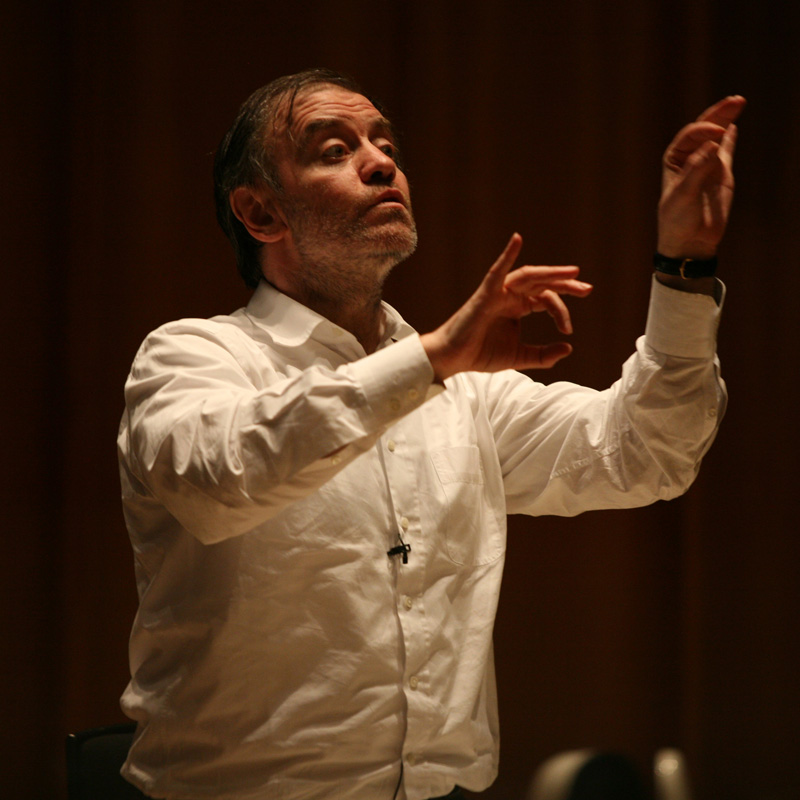 Conducting Mahler’s Symphony No 7 was for me the scariest project of all. Listening to historical recordings of this piece 20 or even 30 years ago did not inspire me to think I wanted to conduct it. Listening to symphonies such as No 1 or No 5 as a student, it’s far easier to understand the link with previous symphonic experience. Both No 7 and No 8 are especially scary for anyone who wants to record them as part of a lasting legacy. This symphony doesn’t need rescuing as such, but it does not defend itself easily in the manner, say, of Symphony No 5 or Symphony No 2. They are shaped very well. They are organic and simply work, with ecstatic endings following a great build-up.
Conducting Mahler’s Symphony No 7 was for me the scariest project of all. Listening to historical recordings of this piece 20 or even 30 years ago did not inspire me to think I wanted to conduct it. Listening to symphonies such as No 1 or No 5 as a student, it’s far easier to understand the link with previous symphonic experience. Both No 7 and No 8 are especially scary for anyone who wants to record them as part of a lasting legacy. This symphony doesn’t need rescuing as such, but it does not defend itself easily in the manner, say, of Symphony No 5 or Symphony No 2. They are shaped very well. They are organic and simply work, with ecstatic endings following a great build-up.
The Seventh I conducted first with the Rotterdam orchestra and then with the Mariinsky orchestra. I felt far from 100 per cent clear and far from 100 per cent prepared – not because I hadn’t attempted to prepare myself but because the piece is so enigmatic. It has a strange, unusual shape, which is the key to it. You have to work very hard at shaping it. This is not really about tempi – it’s more about working with light and shadow and different levels of power. It is essential not to tire your public too early. You start to feel exhausted yourself and worry about the orchestra too. The first movement is so immense you really need to know what to do with the second movement. It’s not just about tempo, I repeat – it’s about maintaining a sense of direction, line and proportion. Intuition plays an essential role. If it was just a question of technique, there would have been hundreds of successful interpretations of this music. If there is Nachtmusik, my view is that there must also be counterbalance, with a lot of sun and daylight and straightforward energy. Some should sound jubilant, but the balance is between different images that are peculiar to this symphony. I started to believe in it only after the live recording with the LSO. Having decided, together with the musicians and the management, that we were going to perform this entire cycle across one season, I was not allowed to think any work was not as good as the others. So I spent the maximum amount of time on this one, trying to make it work, focusing efforts on individual elements within the symphony. It just had to sound right.
I have to shape some vast pieces, in the opera house especially, and I have learnt the importance of shape. As a rule, you certainly don’t expect to record No 7 more than once. The symphony is full of repetitions, especially in the Rondo-Finale, and it’s crucial to decide how aggressive and bombastic you make that movement. Sometimes you have a sombre face, sometimes you have a smile. I took certain risks and urged the musicians to think again about the character of each movement, especially that last one. We know sometimes one composer can change dramatically from one composition to another. It is more tricky when a single composition has these divisions within it – for instance, Siegfried was composed at different times and the two Nachtmusik episodes in this piece were written a year before the rest of the symphony – but for me that was not an obstacle. For me the terrible thought was that we might play, say, the first five or eight minutes of the final movement and I would find myself thinking, “it’s over, it didn’t work again”. That’s a very fearful thought, because a conductor has to be his own fiercest critic. You have to feel it’s moving, becoming more and more focused on one goal, namely the end of the piece. You must feel a natural sense, like climbing Everest, and you mustn’t break the natural line. In that finale, you have to be seriously focused on a dangerously slow tempo, with all those solos for unusual instruments. The temptation is always to exaggerate.
I have been conducting for 30 years and, even so, in this music I have to call upon all my resources and all my experience. This sort of orchestral challenge can destroy anyone. In symphonies Nos 7 and 8 I was charged with extra excitement, but also extra fear, like walking on a high wire. One wrong movement and you go down. I dread this symphony. If any conductor says No 7 is a rather dangerous composition, I will just say “yes, yes, yes!”
Valery Gergiev’s recording of Mahler’s Symphony No 7 with the London Symphony Orchestra is available on LSO Live (LSO0665)
THE CLASSIC ACCOUNT OF SYMPHONY NO 7
London Philharmonic Orchestra / Klaus Tennstedt (BBC Legends BBCL4224-2)
Read review in the Gramophone Archive
(Gergiev photo: LSO)
MICHAEL TILSON THOMAS on Symphony No 8, “Symphony of a Thousand”
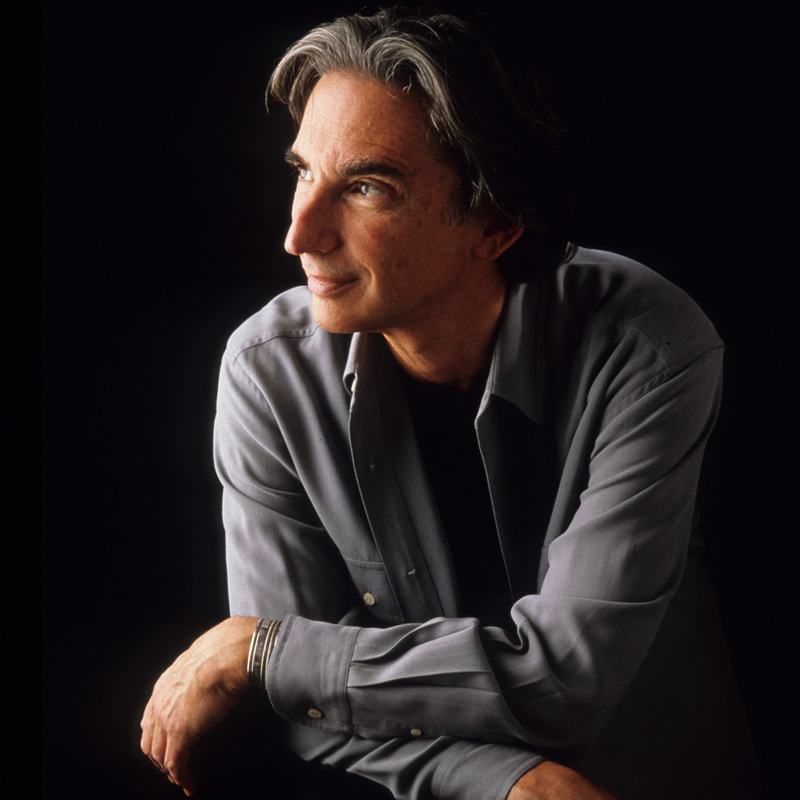 In the Seventh Symphony, Mahler was pursuing strategies of discontinuity – harmonically, polyphonically and schematically – notably in the last movement. So with this mastery of turning on a dime fully at his command, now he sets off to write this big new piece. The big problem with the whole piece is that the forces are so vast that it’s very easy for it all to become quite thick and quite fat. Considering the wonderful, mercurial wit and humour, this is the kind of piece that requires rapier thrusts, whereas the actual forces you have to work with are more like a blunt instrument.
In the Seventh Symphony, Mahler was pursuing strategies of discontinuity – harmonically, polyphonically and schematically – notably in the last movement. So with this mastery of turning on a dime fully at his command, now he sets off to write this big new piece. The big problem with the whole piece is that the forces are so vast that it’s very easy for it all to become quite thick and quite fat. Considering the wonderful, mercurial wit and humour, this is the kind of piece that requires rapier thrusts, whereas the actual forces you have to work with are more like a blunt instrument.
The first movement is a big exposition, including perhaps the longest, most continuous burst of up-tempo music Mahler ever wrote. The imagery is of cloudscapes and bursts of light and little ensembles of heavenly hosts. There is one slower, more dirge-like contrast with sly, expressive violin solos but this burst of exultant energy is combined with contrapuntal mastery that makes it extraordinary to think Mahler once admitted he hardly ever turned up to his counterpoint classes and just squeaked by with passing grades. In this movement, the challenge is to get this wonderfully inspiring and entertaining music, so inherently full of surprise and brilliance, to sound with enough clarity and enough shape. You have to lighten things up and balance them very carefully. Otherwise you lose the wonderful way the vocal group is used to create very particular colours and the organist underscores certain, craggy themes. There is a quality of astonishment, too, as each key area is introduced – harking right back to those dramatic modulations in the First Symphony.
The piece proceeds through an astonishing coda, in which the tempo doubles. It’s important the first movement should end with that breathless feeling, because we are about to turn a corner into another language altogether, with a remarkably restrained and extremely mournful, simple little tune in the winds, which is duly transformed into the radiant, major-key power of the Chorus Mysticus at the end. The harmony here is pungent, with little shades of nuance the players must achieve without upsetting the overall mood of hushed sadness. Then there is a sudden outburst of sound, with the orchestra playing absolutely full out, especially the horns, the cellos and others in the middle range of the orchestra. The mood is reminiscent of the raw emotion in parts of the slow movements in the Fourth and Sixth symphonies and we are on the road to the “Abschied” in Das Lied von der Erde.
Then we have all the high jinks. If you want to appreciate fully the wry genius of Mahler in approaching this text, you just have to compare this with Schumann’s reverential, lyrical setting of the same words. Mahler observes this with all the observational skill of a genre painter. Pater Ecstaticus is this great, enamoured, swashbuckling character, then Pater Profundus is the nearest thing Mahler ever wrote to a Wagner villain role, very much in the Alberich or Hagen mould. There’s great wildness in the music. Then we are into the first appearance of the angels and a kind of street music. These are not delicate little choristers he’s asking for here – these are really street kids, taunting us with edgy irreverence. The music in this section is full of humour. It’s like a game, full of frothy laughter and, after the angels and all the tremolos and trills and the sense of an electric, atmospheric event, comes Dr Marianus. This is a classic example of where many performances go off the rails, because it’s clear from Mahler’s markings that, whatever tempo you’re at as you come out of the angel ensemble, you must slow down gradually to the final hymn of Marianus (“Jungfrau…”). That leads us beyond the realm of words and into the “Ewig Weibliche” theme, with harmoniums and harps. It is the most daringly sentimental evocation of salon music he ever used.
Then we come to my favourite part of the piece – the ensemble with the great sinner ladies. Suddenly we are up a mountain, at a tea party with these three martyr ladies – these three old broads, who obviously get together regularly and reminisce about their wonderful old days of suffering. The twinkle in the music tells us their memories are predominantly happy – oh, remember those jackals? – and they sing a spectacular canon. It’s so charming and they are so enjoying one another’s company. Then comes Gretchen, bright and innocent, with another clear instruction to sing quietly and affectingly. This symphony mustn’t degenerate into a Schreifest. Ultimately the message of the piece is that the majesty of this simple girl’s love matches the entire majesty of Heaven.
Michael Tilson Thomas’s recording of Mahler’s Symphony No 8 with the San Francisco Symphony Orchestra is available on the San Francisco Symphony label (821936 00210-2)
THE CLASSIC ACCOUNTS OF SYMPHONY NO 8
Chicago Symphony Orchestra / Sir Georg Solti (Decca 475 7521DOR)
Read review in the Gramophone Archive Download from Passionato
London Philharmonic Orchestra / Klaus Tennstedt (EMI 463615572-2)
Read review in the Gramophone Archive Download from Passionato
(Tilson Thomas photo: SFSO)
KENT NAGANO on Das Lied von der Erde
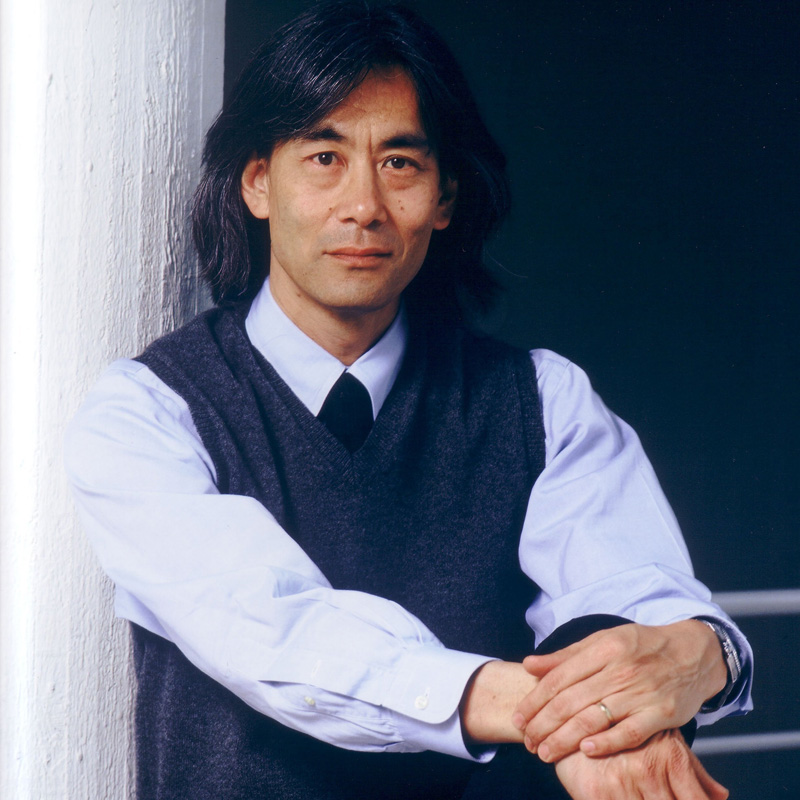 What exactly is this piece? A symphony? Some kind of opera? I don’t find it so much of an opera. It has a special conception and it doesn’t fit into any familiar structure. It is strongly tied to Lieder, with texts that have lyrical, cantabile characteristics. It is a Lieder-Symphony. People had been asking, is the symphony still possible? Is it still relevant? Mahler’s response was to create a refined new form, using the idea of Lieder. In previous Mahler symphonies associated with Lieder, such as the Third and Fourth, only part of the work had taken the form of a Lied, but here all six movements do.
What exactly is this piece? A symphony? Some kind of opera? I don’t find it so much of an opera. It has a special conception and it doesn’t fit into any familiar structure. It is strongly tied to Lieder, with texts that have lyrical, cantabile characteristics. It is a Lieder-Symphony. People had been asking, is the symphony still possible? Is it still relevant? Mahler’s response was to create a refined new form, using the idea of Lieder. In previous Mahler symphonies associated with Lieder, such as the Third and Fourth, only part of the work had taken the form of a Lied, but here all six movements do.
The texts are from outside the Western tradition and strongly influenced by China, which makes the music naturally confrontational. The Eighth Symphony was already an opening to such cultural confrontation, with its two very disparate parts. Part 1 is liturgical, based upon Christian texts, whereas Part 2 is spiritual-secular, with man presented as an individual. This all rather mirrors the old idea of a world divided between an Abendland – where the sun is setting – and a Morgenland, where it then rises. This tension was especially fashionable as the 19th century turned into the 20th. Many writers were influenced by it. Goethe – a major European figure – had strong ties with the East. Rückert, whose texts Mahler also set, was a professor of Oriental languages as well as a writer, with a profound interest in the Orient. Schiller wrote a version of Turandot and, in France, Ravel and Debussy had an obvious fascination with Asia. Throughout all his music, Mahler was striving to find something universal, avoiding exotic stereotypes such as Butterfly. In the words he sets in Das Lied von der Erde, he is once again seeking loftier ideas in words, and his music again takes us through numerous important aspects of the lifetime of a man or mankind. In the First Symphony we have nature and the sense of wandering. The Second brings resurrection and in the Third, nature again, while the Fourth contrasts the Irdisch with the Himmlisch and the Seventh deals with the idea of destiny. Highlighted through all his great works is this sense of the phases of life, a single human being’s struggle with identity, all ultimately culminating in a confrontation with death. In Das Lied he explores these ideas from the perspective of a world that includes both the Orient and the Occident. The result is a breakthrough in what we mean by “symphony”. Mahler used Asian texts as an opening, not a limitation, combining them with mainly but not exclusively Western harmonies and structures. The world is eternal, he tells us, but the individual will perish. It is one the most progressive of his works and takes us forward into the 20th century.
Mahler did rewrite and revise his scores, so would he have rewritten or revised this piece had he lived to rehearse it and hear it performed? We cannot be certain but I am not sure he would have changed it much. There is a lot of forte, especially in the first song, but forte is not all about decibel output. It can mean stronger rather than louder and, in any case, most of the music in this piece does not consist of tutti. There are long, delicate passages of chamber music. Mahler would have reworked the piece but I am not sure the result would have been a smaller orchestra or a slimming-down of the orchestration. This was written at the time of Gurrelieder and after the operas of Wagner, so Mahler knew the benefits of a broad orchestral palette, with the colours and textures it makes possible.
Our recording is drawn from live performances and I asked the orchestra to play very transparently. This doesn’t mean light dynamics from the point of view of the listener, but I did want to avoid congestion. My choice of a baritone (Christian Gerhaher) rather than a mezzo was not “political”. I felt it was important for the concept of this particular performance that we should have collaborators who had a strong, mature relationship with Lieder. In this piece, the colours and nuances can change, even within an eight-bar phrase. The orchestrations must sound natural and organic, and I needed singers who could shade the music in the same manner. Christian Gerhaher and I had long talks about this, before we even began rehearsals. We were exploring together aspects of beauty, but that should not be confused with “pretty”. Beauty can be profoundly disturbing, and distinctly “not pretty”!
Kent Nagano’s recording of Mahler’s Das Lied von der Erde with the Montreal Symphony Orchestra is available on Sony Classical (88697 50821-2)
THE CLASSIC ACCOUNTS OF DAS LIED VON DER ERDE
Kathleen Ferrier; Julius Patzak, Vienna Philharmonic Orchestra / Bruno Walter (Decca 466 576-2DM)
Read review in the Gramophone Archive
James King; Dietrich Fischer-Dieskau; Vienna Philharmonic Orchestra / Leonard Bernstein (Decca 466 381-2DM)
Read review in the Gramophone Archive
(Nagano photo: Susesch Bayat)
ESA-PEKKA SALONEN on Symphony No 9
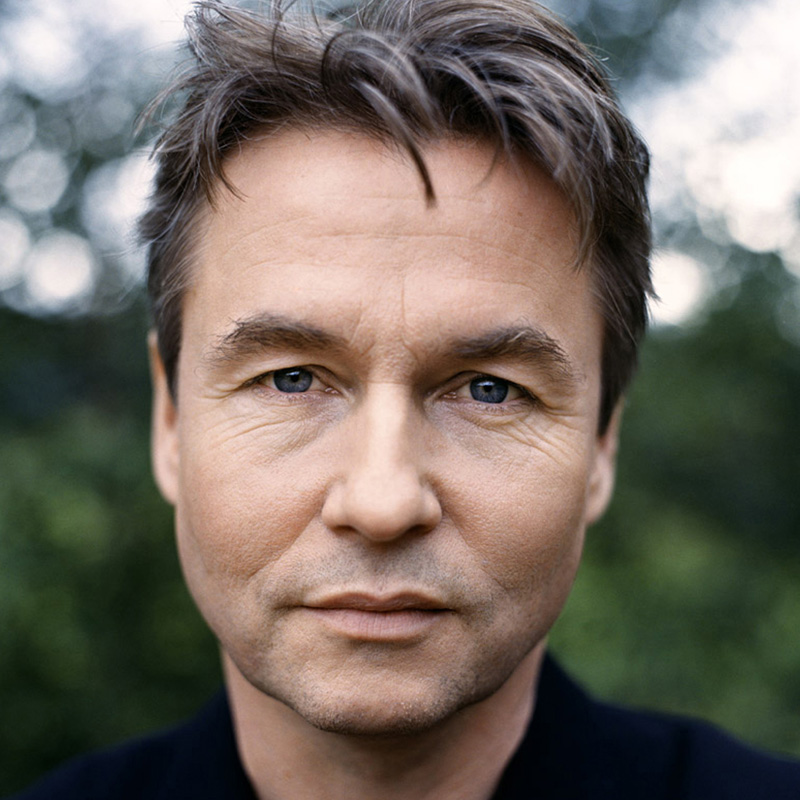 All conductors doing Mahler’s Ninth are in awe of the score to some degree. There is something so universal and powerful there – it makes you feel little at times. Both Das Lied von der Erde and the Ninth Symphony present a very specific challenge to a conductor, because Mahler himself never heard them.
All conductors doing Mahler’s Ninth are in awe of the score to some degree. There is something so universal and powerful there – it makes you feel little at times. Both Das Lied von der Erde and the Ninth Symphony present a very specific challenge to a conductor, because Mahler himself never heard them.
His way of orchestrating was very practical. He consciously over-orchestrated, then in rehearsals he would thin the music out, crossing out unnecessary doublings. It’s always easier and faster to take things out. He would then continue to tweak his scores from performance to performance, according to the specific requirements of different orchestras and venues. For Mahler, composition was a continuous process. There’s very rarely a “final score”. For a conductor of that calibre there was no finality – just a moment when the score had to be printed. In that sense, with the Ninth Symphony you are dealing with an essentially unfinished score.
The problems with the score are more subtle and less obvious than those in the score of Das Lied – think of the famous balance problems in the first song – but they are there. The mature Mahler style started to emerge in his Sixth Symphony and one of its characteristics was his desire to achieve maximum clarity and maximum transparency, by trying to place the harmonic structure so as to ensure every motivic element was completely and clearly audible. Unlike, say, Strauss or Debussy, there is no padding in the texture. There is a complete unity of harmony, melody, rhythm and texture. The Ninth Symphony doesn’t automatically sound clear or transparent. In some of the string passages thematic and secondary lines collide within a very narrow register. I am absolutely clear in my mind that he would have changed that. There are also some wrong harmonies left in the score – some places where he might have made a mistake, especially in the first movement. How do I know? I can only guess, but based upon years of study and admiration and love of Mahler’s music. In many places the conductor has a choice – to be totally true to the score or to clarify certain phrases. These are treacherous waters. I wouldn’t dare to fiddle with instrumentation but internal balances are a different matter. It’s a personal preference but I don’t find chaos emotionally powerful.
Late Mahler was toying with the idea of atonality but very rarely are there chords that bear no relationship to tonality at all. There is a moment of deepest despair in the opening Adagio of the Tenth Symphony that stands totally outside major/minor modality. The main challenge with the Ninth Symphony is how to manage the overall shape of the piece – how to distribute the death, as it were. It must all sound inevitable. The Scherzo takes us into the vortex, with a benign Ländler turning into something totally different. It contains all the prototypes of a Mahler scherzo – it’s the mother of all scherzos. This journey within just one movement is quite amazing. It contains some of Mahler’s most sophisticated music but it’s also über-rustic and, in places, downright funny. It’s a technical showcase, like a miniature concerto for orchestra.
The last page is one of the most amazing pages of score by anybody, by any standards. Every phrase has an incredible intensity. It’s like a reverse biological evolution, with a musical phrase being dismantled, bit by bit. You start with sophistication, and go back to an amoeba, the very basic DNA of all music. This is the most basic figure in all music, the last signal being sent out before silence. What a very, very bold thing to do. When music is being decomposed, there is nothing left but silence. I believe the long retirement of Sibelius was the result of his own motivic process – after the stark simplicity of Tapiola, where else could he go?
Our new recording of the piece is a live recording, of a performance we gave after we had played the piece on tour in places such as the Concertgebouw and Cologne. I very much like the idea of recording this piece live. In fact, the idea of recording that finale in a studio doesn’t feel right. So many of the most celebrated recordings of the piece – Bernstein, Karajan, Bruno Walter in 1938 – have been concert recordings. It’s no accident. This is about death and there must be a sense of no return. It’s your only shot. You just do it and live with the results. This is real life and death, not a video game.
Esa-Pekka Salonen’s recording of Mahler’s Symphony No 9 with the Philharmonia Orchestra will be released by Signum late this year
THE CLASSIC ACCOUNT OF SYMPHONY NO 9
Berlin Philharmonic Orchestra / Herbert von Karajan (DG 453 040-2GTA2)
Read review in the Gramophone Archive Download from Passionato
(Salonen photo: Nicho Södling)
RICCARDO CHAILLY on Symphony No 10
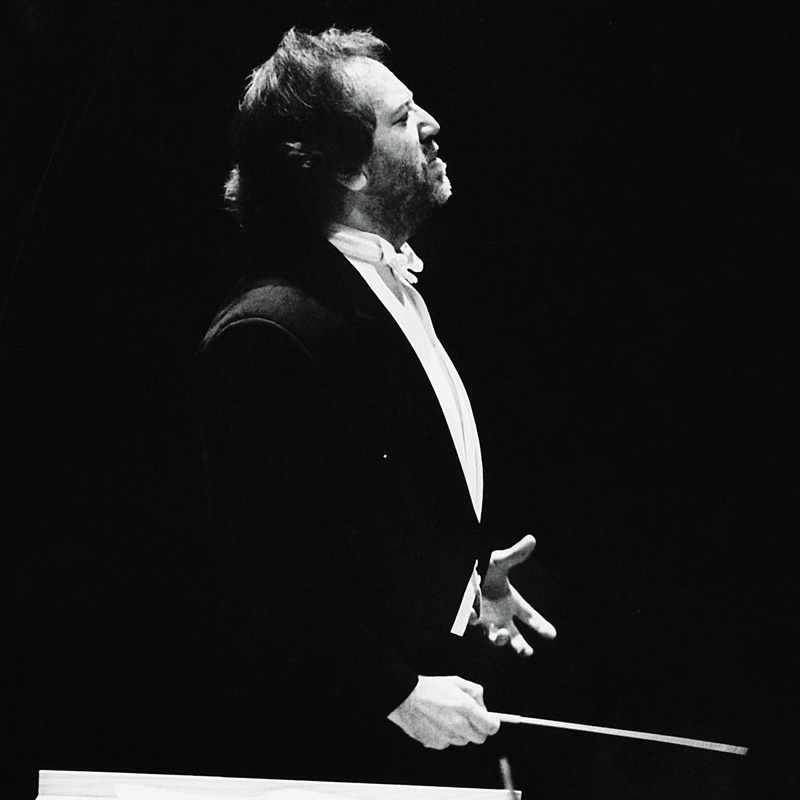 Das Lied von der Erde and the Ninth and Tenth symphonies are three late masterpieces of Mahler. In 1960 Deryck Cooke unveiled a masterpiece which was absolutely not known before. I have been conducting the Cooke version of this symphony for more than 25 years and I can say only good things about him. I think what counts is the value of the piece and the greatness of the music in his version. Mahler seems to have intended that the Tenth should be played straight through and Cooke recognised this is a mirror piece and, towards the end of the finale, there is that clever idea when the horns, in that desperate, high tessitura, recall the violas’ theme from the very opening of the piece. The “Purgatorio” is the centre, the “Dante element”, a treasure fully orchestrated by Mahler himself, surrounded by two scherzos of similar length and two outer adagios almost of the same length. Too often the first Adagio is done too slowly and I have been trying, in my most recent performances, to balance the two adagios.
Das Lied von der Erde and the Ninth and Tenth symphonies are three late masterpieces of Mahler. In 1960 Deryck Cooke unveiled a masterpiece which was absolutely not known before. I have been conducting the Cooke version of this symphony for more than 25 years and I can say only good things about him. I think what counts is the value of the piece and the greatness of the music in his version. Mahler seems to have intended that the Tenth should be played straight through and Cooke recognised this is a mirror piece and, towards the end of the finale, there is that clever idea when the horns, in that desperate, high tessitura, recall the violas’ theme from the very opening of the piece. The “Purgatorio” is the centre, the “Dante element”, a treasure fully orchestrated by Mahler himself, surrounded by two scherzos of similar length and two outer adagios almost of the same length. Too often the first Adagio is done too slowly and I have been trying, in my most recent performances, to balance the two adagios.
Fortunately, the published score enables the conductor to see a reproduction of the original sketches of Mahler. You see how much Mahler there is there. Deryck Cooke only added the minimum necessary to perform the piece and there is no ego present there at all. The winning point is the simplicity of Cooke and how faithful he was to the sketches, without any exuberance or pretence of originality. Obviously Mahler would have done it differently, but then think of Das Lied von der Erde. If he had heard the first movement, how the balance runs the risk of murdering the tenor, knowing how hyper-critical he was of his own music, he would certainly have improved that as well. The one thing I do wish is that Faber Music, the British publishers, should print the orchestral material, as they printed the orchestral score. The piece is so difficult to play in any case, so the last thing the orchestra needs is to have difficulty reading the notes from handwritten material. This is one of the main reasons why there are still so few performances of this piece.
Unfortunately we also have to blame Alma for what she said and wrote, with the support of Bruno Walter, which influenced great Mahler figures such as Bernstein. When I conducted the piece in Berlin in the 1980s, Maestro Karajan asked me for a private chat. I had great reverence for him and arranged to see him at the Philharmonie at nine in the morning. He wanted to ask about the Tenth Symphony. I gave him my impressions and he asked me how difficult it is to conduct the second movement. I told him how impossibly complicated it is to play and to conduct, and told him I regarded it as being as technically difficult as the “Danse sacrale” in The Rite of Spring. “In that case, I had best not look into it,” he said. “Why?” I asked. “You are such a splendid Mahler interpreter, maestro.” He responded, “Some things just come into your life too late.”
I have looked into other performing editions of the piece. They all have interesting ideas but I think they add too much to the torso of the original Mahler sketches. There is a tendency to overdo, which Mahler would not like. I have studied the way Mahler handled the scores of the Second and Fifth symphonies. As he revised those pieces, it was only ever a process of taking away, never a process of adding. He always slimmed down his works. That is why I prefer the “spartanity” of Deryck Cooke’s orchestration, which truly takes us to the heart of the piece. Mahler was moving, by himself, into the 12‑tone system. In the first Adagio there is a vertical cluster of nine pitches altogether, like a horrified scream for symphony orchestra. Had he lived even five years longer, as he approached the 1920s, I believe, like Puccini in the sketches for the finale of Turandot, Mahler would have carried on in the direction of 12‑tone. We know about Mahler’s conversations with Schoenberg about the theory of Klangfarben as exemplified in the Six Orchestral Pieces. According to Alma, he was indifferent to this theory, but at the beginning of the First Symphony there is that marking, Wie ein Naturlaut, which almost amounts to the same thing. He simply was not impressed by theories and preferred to do things in his own way. He was a real conductor, very pragmatic and bored with having to explain everything, which conductors have to do on a daily basis, not only with their arms, but also with words!
Riccardo Chailly’s recording of Mahler’s Symphony No 10 with the Berlin Radio Symphony Orchestra is available on Decca (466 955-2DH)
CLASSIC ACCOUNT OF MAHLER'S SYMPHONY NO 10
Bournemouth Symphony Orchestra / Sir Simon Rattle (EMI 585901-2)
Read review in the Gramophone Archive
Berlin Philharmonic Orchestra / Sir Simon Rattle (EMI 56972-2)
Read review in the Gramophone Archive
(Chailly photo: Decca)











